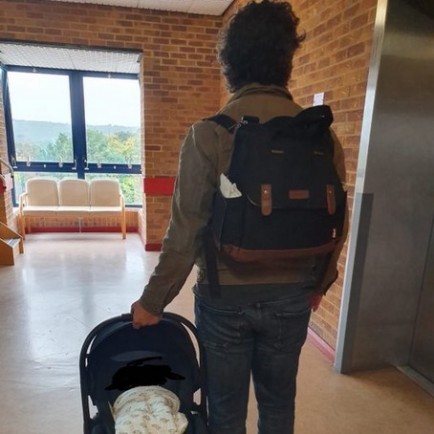Yes, you can bring your baby with you on your cruise vacation. With the exception of some adults-only ships, most cruise lines allow you to cruise with a baby who’s six months or older. On certain itineraries — usually exotic cruises and long ocean crossings — the minimum age for kids is 1 year or older.
Only you can decide if you should take your baby on a cruise. Things to consider include whether you’re comfortable taking a baby to a destination where medical care might not be as good as at home and whether bringing your baby will impact your ability to sightsee in port or enjoy all the cruise ship fun, especially the nightlife.
If you’re cruising with a baby, not only do you have to pay your little one’s cruise fare, but the rate is usually not discounted. That is generally because babies create more work for ship staff (think cleanup), but do not create additional cruise line revenue by purchasing things onboard (such as cocktails, casino chips and shore excursions). Look for “kids sail free” promotions or discounted third- and fourth-passenger rates if you’d like to save on baby’s cruise fare.
Cruise ships carry Pack ‘n Plays (small, portable cribs) for cruising babies; be sure to request one when you book your cruise. Your baby is also welcome to sleep in the bed with you, or you are welcome to bring your own travel crib. Older babies and toddlers can sleep on pullout sofas (make sure one is available in your cabin before booking) or in a bed, but cruise ships will not provide bed rails. Some parents bring sleeping bags and make “nests” on the floor for older babies who are too big for cribs but have trouble with regular beds.
Note that, on most cruise ships, your cabin will be one open room (like a small hotel room), with no way to separate your baby’s sleeping area from the rest of the cabin. Some lines, like Disney, offer room-dividing curtains.
Unless you book a suite, family cabin or a Disney cruise, your cabin will likely not have a bathtub. Cruise bathrooms are usually shower-only. To bathe your baby, take him or her in the shower with you (or use the removable shower head for a spray-down), do a sponge bath, or bring your own inflatable tub with you.
Some cruise lines (such as Disney and Cunard) will mash or puree food for babies; others (like Carnival and Royal Caribbean) don’t offer this service. Check with your cruise line before you sail. If cruise ship restaurants won’t provide purees, you can either bring your own jarred baby food onboard or see if the line offers in-cabin delivery of jarred baby food through its Gifts program. Either way, you might want to bring a supply of food for use during shore excursions and as a backup if your baby is particular to a certain kind of food. Cruise ship restaurants will have high chairs available.
If your baby is a milk or formula drinker, you should double check that your ship carries the type of milk (whole, 2 percent, soy, almond, etc.) your baby likes. You will need to bring your own formula onboard. Also, research in-cabin refrigeration options, especially if you plan on storing breast milk. Minibars don’t always run as cold as your fridge at home.
Note that you are on your own for bringing — and washing — your own bottles, sippy cups, baby spoons, bibs and other infant feeding essentials.
Baby-sitting options vary widely by cruise line. Some ships do offer in-cabin baby-sitting, but often there’s a minimum age of 1 year, and sitting is only available if there’s an available crewmember at the time you need. Ships with nurseries (Cunard, Disney and Royal Caribbean) will offer drop-off options in a group setting. Reserve your spot early, especially on cruises with lots kids onboard. But most ships have no baby-sitting for kids younger than 3. In that case, you will need to take your kids, awake or asleep, with you to your evening activities, or have someone stay in the cabin with them while they sleep. It’s not safe to leave your child on his or her own in a cruise cabin.
Yes — with many caveats. Some cruise ships will have nurseries; these are play areas designed for the under-3 set, but you might have to pay to drop off your child there in order to access the facility. Other onboard kids clubs will have play areas for kids younger than 3 to use with their parents or have open hours when parents can bring the little ones to play in the older kids’ facilities when they are not otherwise in use. Some ships might host a play session for babies and toddlers in another onboard space, such as a lounge.
But you can’t count on having a play space available for your baby at the time you need it. If your baby needs a place to crawl around or play, and you want to get out of your cabin, look for an unused lounge or bit of hallway. Look out for open railings, open stairwells, highly trafficked venues and even decorations (like planters with rocks) that could be hazards.
Some ship kids clubs have toys you can borrow, but you are better off bringing your own. Cruise ships with libraries often have kids sections, or you can find some in the kids clubs, but the selection will be hit or miss, so again, it’s best to bring your own.
No. Children must be toilet trained to use cruise ship pools. A few ships do have splash zones for the littlest cruisers; swim diapers are required for those.
If you plan to travel by car or taxi during your cruise, you will need to bring your child’s car seat to comply with the law and be safe. If you don’t want to lug it, alternatives include only traveling by bus, hiring tour guides in port who provide their own car seats, renting cars with car seats or relegating yourself to port activities reached only on foot.
You will want some kind of stroller or baby carrier for taking baby around the cruise ship and in port. You will need to store it in your cabin, so we recommend bringing a small umbrella stroller, rather than a large baby jogger.
All cruise line-sponsored activities onshore have age minimums. Often, the youngest babies don’t qualify. When they can go on shore tours, babies typically go free or for a reduced rate. Otherwise, plan on arranging your own tours and activities in port with baby.
Babies are notoriously messy, so you will likely want to do laundry at some point during your vacation. You can send out clothes for crewmembers to clean, but the fee is often quite high. Some cruises have self-serve laundry rooms. Otherwise, you can bring your own detergent and stain remover to hand wash items in your cabin bathroom’s sink. Most cruise ship showers have clothes lines where you can dry your washing.
A far few cruise ships sell diapers and wipes onboard; most do not. You will need to pack enough diapers and wipes for your trip, order baby essentials through a cruise line’s Gifts program, or take time out of your sightseeing in port to pick up foreign brands to supplement. If your child usually wears cloth diapers, we’d recommend bringing disposable ones for the duration of the cruise.
Essential baby items will either not be available at a ship’s sundry shop or will be expensive; finding the correct items in a foreign market can be dicey. We recommend bringing an emergency kit with baby medicines, a thermometer and snot sucker, as well as plenty of infant-friendly sunblock. You’ll want to bring a sun hat and swimsuit that provide the most protection from the sun, as well as warm hats and jackets for colder-weather cruises. Bring formalwear or dress-up clothes for nice dinners — and because the photos make great souvenirs.
In addition to the aforementioned baby food, bottles, diapers and wipes, don’t forget sponges, bottles brushes and a small bottle of dish soap if you’re going to be washing bottles and sippy cups in your cabin.
Original article: https://www.cruisecritic.com/articles.cfm?ID=1736




























Comments